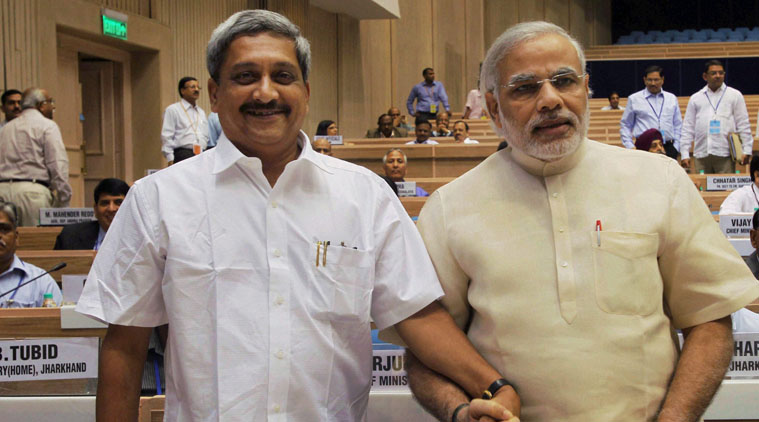It has been over a year since BJP
formed its first full majority government. And if one were to step back to look into this
one year, one is underwhelmed by the performance of the government. Now before I am branded as another die-hard
critic who sees only the nefarious and amoral in all that the new government
has done. Let me clarify one thing, I am and continue to be one of the biggest
supporter of Narendra Modi. As founding member of an organization that played a
vital part in ensuring Narendra Modi’s victory, I along with others have toiled
hard to convince people to support Narendra Modi. Infact, it gives me pride to
say that, we started campaigning for Modi in June 2013, when even the BJP had
not even appointed him as the campaign chief in the Goa conference and where
the established opinion was that the likelihood of Narendra Modi becoming PM
candidate was as unlikely as India winning the next Football world cup. Further
even though we spent our time and money in galvanizing across 2 states,
hundreds of towns and thousands of villages, we at the culmination of our goal dissolved
the very organization and got back to our normal lives. Hence it is the voice of
someone who has staked a lot on Narendra Modi that I claim that I am
underwhelmed.
Also neither I
am those who had unrealistic expectations from this government. I understand
how economics work and Rome was never built in a day. I am not demanding my
Bullet trains today as I know that it take’s years to build one nor am I asking
India to become a developed nation in the next five years. I clearly understand
that things take time and effort to succeed. Therefore the question arises is
why do I feel underwhelmed by the government’s performance. Given that it is a
true fact that government has minimized and eradicated corruption at the highest
levels, has given rigour to foreign ministry languishing since the days of
Indira Gandhi. The government has done many things right from modernization and
importance given to defence sector to socio-economic policies like the
insurance schemes and others. The Swach Bharat Abhinayan is truly commendable
and if it succeeds it would be truly transformational.
No, it is not
because that I don’t see the positive developments in the last one year nor is
it because that I doubt their intentions that I feel underwhelmed. No, not at
all. The main reason, I feel underwhelmed is the progress made on the economic
and development front. I see clear lack of rigour and drive towards
development, economic reform and rejuvenation. My main grouse, when Narendra
Modi set us a target of 272+, the so called “intellectual” opinion of this country
sniggered at our unrealistic and quixotic goal. Even the staunchest of Narendra
Modi’s supporter never believed we will win more than 272 seats to become the first
non congress party to win majority on its own. We succeeded in achieving the
same precisely because we set ourselves hard and brutal targets and strove with
determination, single-minded focus on achieving it and nothing distracted us on
our path to victory. Today, I see a lack of similar sentiment in the way
government is approaching matters, from GST to land ordinance bill, from Labour
reforms to relegating useless laws and regulations.
What the
government has done in the last one years on the reform and development agenda
has not be unique or special. It did not a Narendra Modi to do it and any
sensible government could have done the same. If BJP had in its wisdom chosen
Sushma Swaraj, Arun Jaitley or any other so called secularly acceptable PM
candidate, BJP would still have likely formed the next government in a
coalition of myriad partners. This coalition government of Arun Jaitley would
have easily achieved what this government has achieved in the last one year.
Then the question arises is why has the government till now done what any
mediocre Arun Jaitley government could have done with coalition government. Why
did hundreds of thousands of youth organize themselves spend time and money in
electing Narendra Modi has prime minister with a full majority if all that
could have been achieved would have been achieved without us doing so. When I look
back, I remember the volunteers with whom I interacted who were ready to spend
even their meagre earnings to campaign for Narendra Modi and I feel
disheartened that all their efforts have not mattered as we ended up appointing
a Jaitley government rather than Narendra Modi led one.
Hence I urge
our Prime Minister to relook at the last one year critically and understand the
tremendous effort of the volunteers who are all looking for the same single
minded determination, focus towards achieving unrealistic goals. To display
drive and rigour in achieving necessary actions to reform and deregulate the
mess created by the 65 years of misrule and set us up for double digit growth
for the next two decades. Enough of testing waters solutions, half-hearted
attempts, misaligned thrusts and working on “consensus solutions”. I would like
to end my case by saying
“Bas Karo Jaitley Sarkar ab Chahiye Modi Sarkar “







.jpg)




















